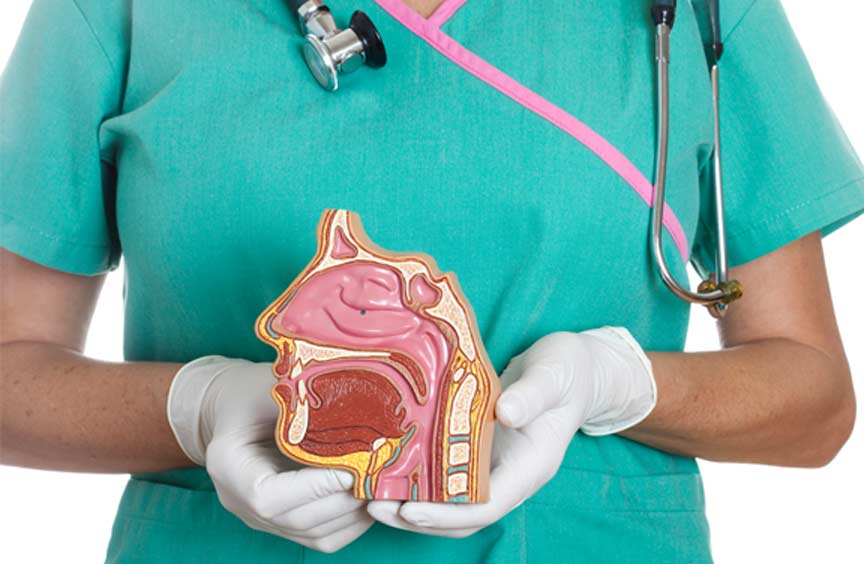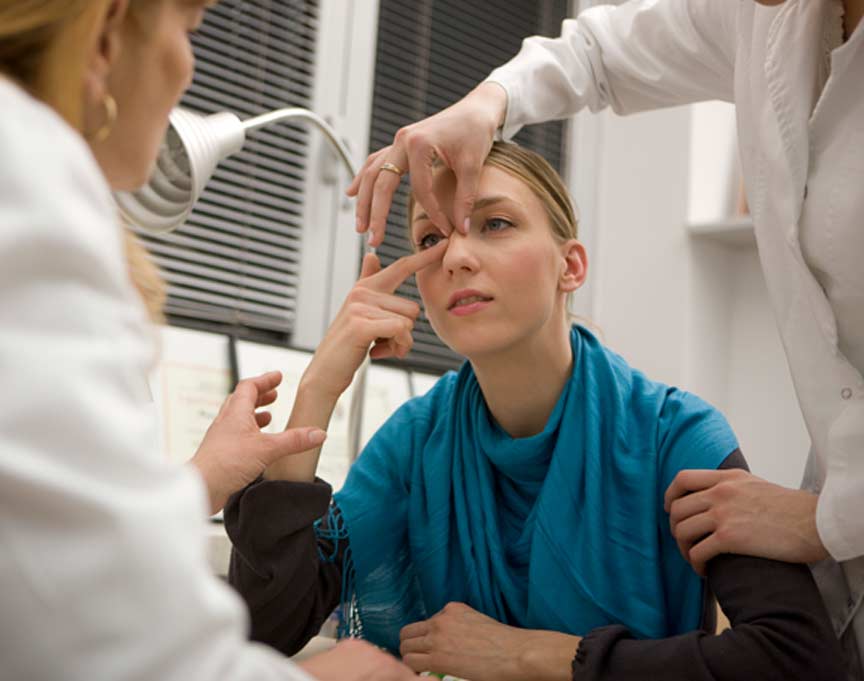

The most effective approach to treating turbinate hypertrophy is turbinate reduction surgery.
The turbinates are structures found inside the nose. Their normal role is to humidify inhaled air and to trap particles present in the inhaled air before they can enter the lungs. Unfortunately, they can become inflamed and enlarged, usually in response to allergies, asthma, or an infection, which can result in obstruction of air flow through the nostrils into the lungs.
Symptoms of this condition include mouth-breathing, chronic nasal congestion, and a feeling of pressure in the sinuses.
Radiofrequency Turbinate Reduction
A minimally invasive approach to turbinate reduction uses radiofrequency energy to reduce their size. In this procedure, no incisions are made; a needle-like instrument is placed through the nostril into the turbinates after local anesthesia is used to numb the tissues. Then the energy is transmitted through the needle into the tissue, selectively ablating it. This procedure only takes about ten minutes, but there is a recovery period where for about three weeks afterwards the tissues inside the nose crust over and will need daily irrigation with saline solution and the application of an antibiotic cream. In addition, some people experience re-enlargement of the turbinates a few months later and may need to undergo an additional procedure.


Surgical Reduction
Surgical reduction is often recommended instead of an ablation procedure when a deviated septum is present in addition to enlarged turbinates. Deviated septums are very common and while they are sometimes asymptomatic, in other cases the crooked or misplaced septum squashes the turbinates and partially obstructs the airflow. Surgical procedures to correct deviated septums and reduce the turbinates are usually performed under general anesthesia. All incisions are made inside the nose so there are no visible scars afterwards.
The exact technique applied in these cases depends on what else needs to be done in addition to trimming the turbinates. In addition to turbinate reduction and correction of a deviated septum, a full rhinoplasty can be conducted during the same procedure to alter the appearance of the nose or to correct a crooked or humped nose.
The recovery from turbinate surgery depends on the extent of the work that was done. If only the turbinates were reduced, full recovery generally only takes about three weeks. If a deviated septum was corrected, or extensive bone remodeling was required to reduce the size of the turbinates, full recovery may take three to six months. The nose may need to be packed with dressings and have a splint applied for a week or so after the procedure, and there may be visible bruising and swelling of the face. Your doctor at Nasal & Sinus Surgery Center will help you understand what to expect.
Success Rates
Most turbinate reduction procedures are extremely successful and open the airways, allowing free, normal breathing to occur. In some cases, however, the turbinates re-enlarge and may need to be surgical reduced or ablated again. If extensive bone remodeling was necessary during the procedure to reduce the turbinates, they may not be able to perform their normal functions of humidifying inhaled air. In these cases, in order to avoid irritation of the sinus tissues, it may be necessary to run a humidifier in the house.
